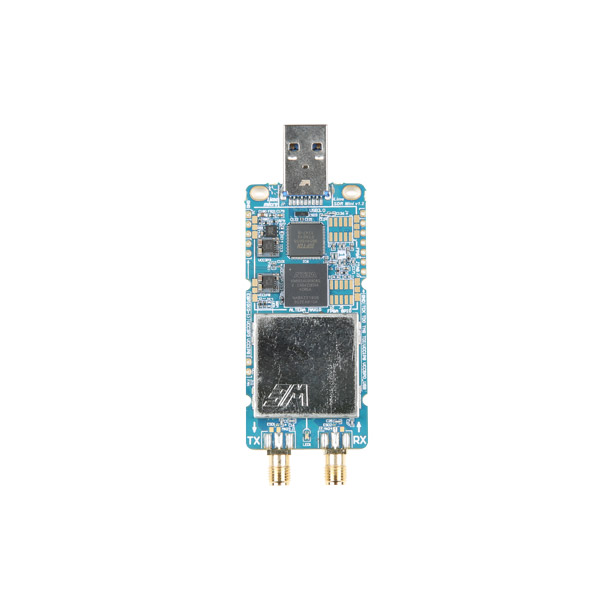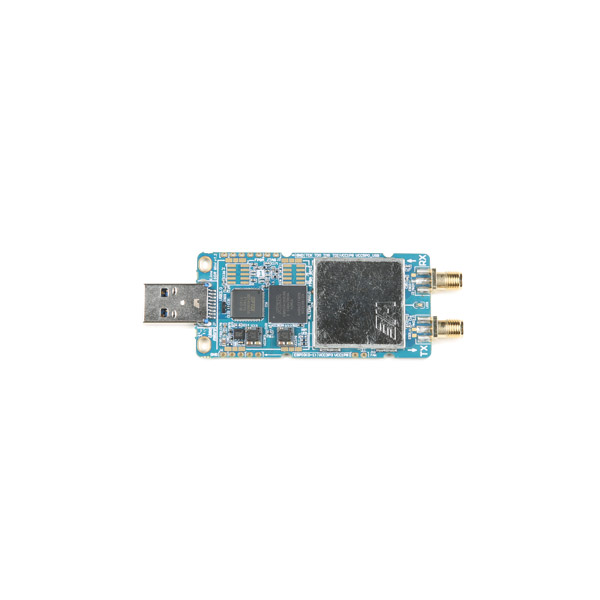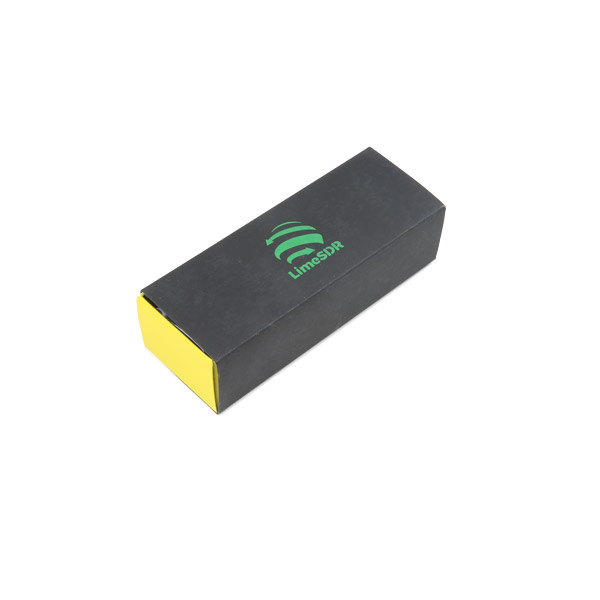LimeSDR Mini
The LimeSDR Mini development board is a hardware platform for developing and prototyping high-performance and logic-intensive digital and RF designs that use Altera’s MAX 10 FPGA and Lime Microsystems’ LMS7002M RF transceiver. Simply put, the LimeSDR Mini is a smaller, less expensive version of the original LimeSDR. However, it still packs a punch - at its core, the LimeSDR Mini uses the same LMS7002M radio transceiver as its big sibling. The Mini has two channels instead of four, and, by popular demand, SMA connectors instead of micro U.FL connectors.
While most SDRs have remained in the domain of RF and protocol experts, the LimeSDR Mini is usable by anyone familiar with the idea of an app store - it’s the first SDR to integrate with Snappy Ubuntu Core. This means you can easily download new LimeSDR apps from developers around the world. If you’re a developer yourself, you can share and/or sell your LimeSDR apps through Snappy Ubuntu Core as well!
The LimeSDR Mini platform gives students, inventors, and developers an intelligent and flexible device for manipulating wireless signals, so they can learn, experiment, and develop with freedom from limited functionality and expensive proprietary devices.
- RF Transceiver: Lime Microsystems LMS7002M
- FPGA: Intel Altera MAX 10 (10M16SAU169C8G)
- 169-pin FBGA package
- 16K Les
- 549KB M9K memory
- 2,368KB user flash memory
- 4x fractional phase locked loops (PLLs)
- 45x 18x18-bit multipliers
- 130x general purpose input/output (GPIO) Single supply voltage
- Flash feature
- FPGA configuration via JTAG
- EEPROM Memory: 2x 128KB for RF transciever MCU firmware and data
- Flash Memory: 1x 4MB flash memory for data
- General User Inputs/Outputs:
- 2x dual color (red + green) LED
- 8x FPGA GPIO pinheader (3.3V)
- Connectivity:
- USB 3.0 Type-A (FTDI FT601 controller)
- 2x coaxial RF (SMA) connectors (each can be switched between high and low frequency bands)
- U.FL connector for external clock source
- FPGA GPIO headers
- FPGA JTAG connector
- Clock System:
- 30.72MHz onboard VCTCXO
- Possibility to tune VCTCXO with onboard DAC
- External clock input via U.FL connector
- Board Dimensions: 69mm x 31.4mm
- Board Weight: 20 grams
- LimeSDR Mini Documentation
- Datasheet (LMS7002M)
- Lime Suite
- GNU Radio (Ubuntu)
- PothosSDR (Windows)
- FPGA Resource Page
- GitHub
LimeSDR Mini Product Help and Resources
Core Skill: Programming
If a board needs code or communicates somehow, you're going to need to know how to program or interface with it. The programming skill is all about communication and code.
Skill Level: Experienced - You will require a firm understanding of programming, the programming toolchain, and may have to make decisions on programming software or language. You may need to decipher a proprietary or specialized communication protocol. A logic analyzer might be necessary.
See all skill levels
Core Skill: Electrical Prototyping
If it requires power, you need to know how much, what all the pins do, and how to hook it up. You may need to reference datasheets, schematics, and know the ins and outs of electronics.
Skill Level: Rookie - You may be required to know a bit more about the component, such as orientation, or how to hook it up, in addition to power requirements. You will need to understand polarized components.
See all skill levels
Comments
Looking for answers to technical questions?
We welcome your comments and suggestions below. However, if you are looking for solutions to technical questions please see our Technical Assistance page.
Customer Reviews
No reviews yet.




